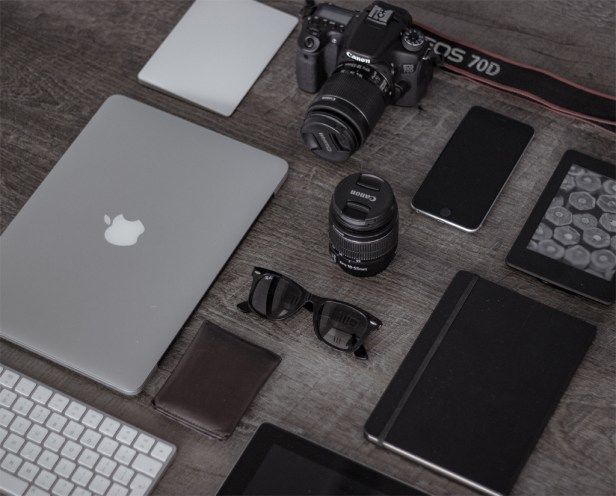Essential Skills Every Digital Journalist Should Have
Essential Skills Every Digital Journalist Should Have
Working as a digital journalist (or a blogger) isn’t easy. There are some essential skills that you will have to master to be good at it.
Okay, you have written a perfect content (or you just think you did), you have published it and shared it via Social Media channels (Facebook, Twitter, Google Plus, Pinterest, Linkedin, etc.) and now you think that your fresh content will be noticed (because it’s relevant, trustworthy, it took you a lot of time and researching process to make it and it just looks awesome). But it wasn’t. Zoinks! What went wrong?
In this article, I will tell you which are the essential skills every digital journalist (or a blogger) should have.

Basic SEO knowledge:
Search engine optimization (SEO) is the process of affecting the visibility of a website or a web page in a web search engine’s unpaid results – often referred to as “natural", “organic", or “earned" results. (source: Wikipedia).
Importance of keywords
Every article is related to the specific topic. So, every topic is related to specific keyword/s.
Before you start writing, you should do a keyword research related to the topic you have chosen to write about. You can do it with Google’s free tool called Google Keyword Planner (you will have to open an account on Google AdWords first).
Once you have finished your keyword researching, you will have to know how to use your targeted keyword in a proper way. Here are some tips that you will have to follow:
On Page SEO
How to, where and where not to use your keyword in your content:
- Title tag: Title tag is the second most important piece of content on a webpage, so be sure to include your keyword in your title tag. It’s even better to start your title tag with the keyword.
- The first paragraph of your content: Be sure to include your keyword in first few sentences of your content (first 100 words).
- Description tag: Meta description tags are really important in gaining user click – trough from SERP, so be sure to have your keyword included in your meta description.
- H1 tag: On category page H1 tag is treated as a category name, so, include your keyword in your H1 tag.
- Include your keyword in your content more than once, but don’t overdo it. Using one keyword too many times in your content can hurt your page visibility.
- Don’t use the same keyword in your h1, h2 and h3 tags. (Complete guide how to and why to use headings you can find on this link).
- URL: Make sure to include your keyword in your URL address
- Content tags: Content tag is a term that is added to a web publication that relates the specific publication to others that are similarly tagged within the system. So, include your keyword in your content tag
- Long-tail keywords: Long-tail keywords are longer and more specific keyword phrases which can be hugely valuable if you know how to use them. Use long-tail keywords ( two to four-word phrase) in your content tags.
Content checklist
- Content length: If you want to reach the first page of Google’s search results (when someone is looking for a content that has your main keyword included), try to write at least 1200 words (more is better).
- Duplicate content: Do not publish duplicate content on your website, it will have a negative influence on site search engine visibility (even if it’s slightly modified).
- Keyword density: Don’t go overboard with your targeted keyword, it can hurt your page rank.
- Spelling and grammar: If your content is grammatically correct, it will send a quality signal to search engines, so be sure to write your content on grammatically proper way.
- Content update: If you have already published content about a specific topic, and meanwhile you have found more information that you can add, do it! Updating your content will improve your search engines rank.
Internal and external links
- Outbound links: Linking to high authority sites related to your content will improve your search engines ranking stats. Try to link to at least three relevant websites, but don’t overdo it.
- Wikipedia: Find relevant source from Wikipedia for your content and link to it. Google finds Wikipedia as a high authority site.
- Inbound links: Use internal links to improve your On-Page SEO. If you have more pages on your websites that are related to the similar topic, be sure to use this strategy, but use it in a smart way (do not link words to another content that is not related to it).

Multimedia
In a digital world, images, videos, and another multimedia elements may act as a content quality signal.
- Images: Use the power of images to make your content better. It’s not just going to make your content visually better, it will also act as a quality content signal.
Optimize your images to get more traffic on your website.
How to optimize images for your content?
Before you add a new image to your website, there are some things that you will have to do first:
Right click on your image and open properties:
- Add a title – give your image a name
- Add a subject – tell what your image is about
- Add tags for your images (use tags relevant to the topic you are writing about) Extra tip: Use your competitors name as one of your image tags for chances to be found via Google images when someone is looking for your competitor. Do not use more than eight tags.
- Add a comment: Describe your content in two – three sentences and add that description in your image comment.
After you have done with that, upload your image to your website.
Once your image is uploaded, open it on your website and add additional description and alt text.
- Video: Google owns Youtube. Including Youtube video that is related to the topic in your post will send high-quality ranking signals to search engines. Use at least one Youtube video in your post.
Complete SEO starter guide by Google you can find on this link.
List of 200 Google’s SEO ranking factors you can find on this link.
Do you have something to add? Please, feel free to leave a comment.
Images credit: Unsplash/Pixabay
Graphics credit: FreePik


